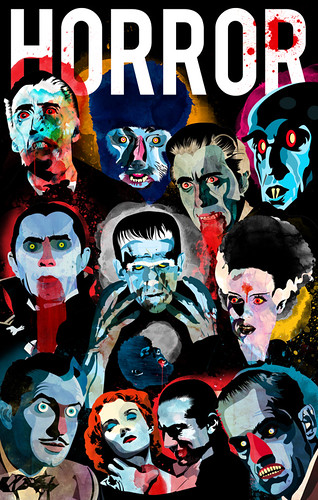Horror films have been elevated in recent decades. Computer-generated imagery (CGI) has been perfected to make viewer’s worst nightmares as real as possible. Fake blood, lights suddenly turning off, a character stumbling into the basement for the last time, or an eerie voice on the other end of the landline when the owner of that voice is actually lurking through the window are not necessary elements of horror films anymore. Or so filmmakers today may think…
With the advancement of technology, horror films have begun to rely on CGI rather than the natural building of tension to enhance the dramatic and horrific effects in their storylines. Horror films such as Insidious, Smile, The Conjuring Franchise, and even NOPE have succumbed to this evasion. This does not necessarily mean that these are inherently bad films. There are strong concepts within each of their plotlines. It is their reliance on CGI and “movie magic” that weaken the horrific sensation that was carefully curated in older horror films.
Although older horror films, such as Psycho, The Shining, Scream, etc., may not have visual effects as realistic as modern day films, it can be argued that the lack of visual effects actually made them scarier. Due to their inability to rely on CGI to create elaborate monsters, filmmakers in the 20th century had to get more creative to scare their audiences.
In Psycho, it was Anthony Perkins’ mono-toned, fragile performance as the psychopath, Norman Bates, that made him all the more terrifying. The uncomfortable conversations between the two main characters created an intimately frightening set up for what was to come; the building of anticipation was arguably more frightening than the death-scene in the shower.
In The Shining, Jack Torrance’s slow mental decay is what makes the film truly scary, not necessarily the lady in the bathtub or the twins lurking in the hallway. While those factors are iconic and add to the horror elements within the film, it is seeing a supposedly normal man turn into a maniac that truly shakes the audience. The most chilling aspect of the movie is the repetitive writing of “All work and no play makes Jack a dull boy,” which builds the audience’s fearful anticipation of his psychotic break.
Scream also cleverly implements uneasiness in its viewers simply by playing off on everyone’s fear: being watched without our knowledge. Additionally, Scream’s intertwining of the “who dunnit?” plotline with horror left the audience unable to trust any of the supporting characters; thus, establishing more tension. These details within these films seem simple, that is because they are and that is what makes them work.
Horror films today have placed their focus on how visually disturbing they can make their antagonists. While this can be interesting at times, many of these films have moved so far from reality that they have abandoned tactics which make the audience believe that they’re at as much risk as the characters in the film. Current horror films lack the realism that creates the true fear often found in older horror films. Filmmakers, before the 21st century, had to use real life situations and real elements to build tension. People are more terrified of how reality can be twisted rather than the monsters underneath our beds or within our closets —we are far more scared of the monsters that could be lurking within our own heads.
“Gallery of Horror” by alvaro tapia hidalgo is licensed under CC BY-NC-ND 2.0.

